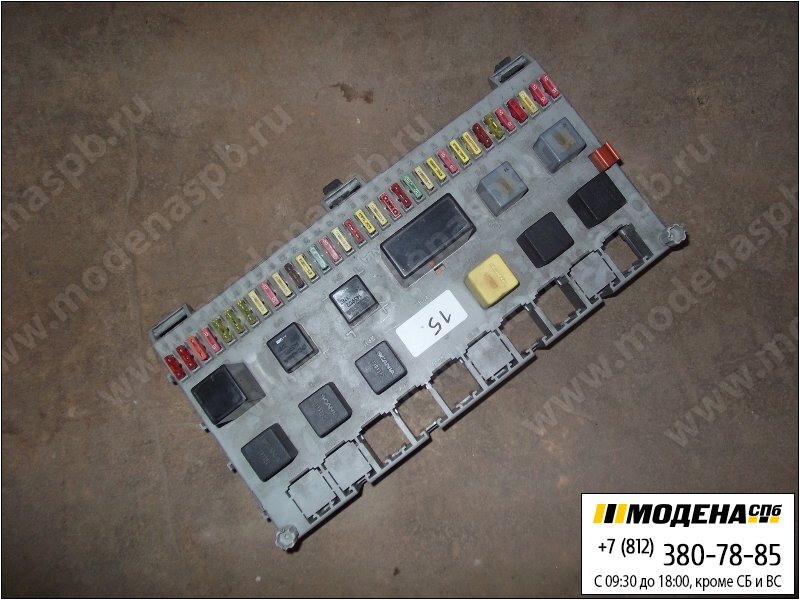Blok Predohranitelej Scania 124 Russkom Yazike

Scania P 270,, Ireland Scania develops, manufactures and sells trucks with a (GVWR) of more than 16 (), intended for long-distance haulage, regional, and local distribution of goods, as well as construction haulage. The 1963 forward-control LB76 forged Scania-Vabis's reputation outside Sweden, being one of the first exhaustively crash-tested truck cabs. Current [ ] All current trucks from Scania are part of the, but are marketed as different series based on the general cab height. • P-series – launched in August 2004, typical applications are regional and local distribution, construction, and various specialised operations associated with locally based transportation and services. P-series trucks have the new P cabs, which are available in several variations: a single-berth sleeper, a spacious day cab, a short cab and a crew cab • G-series – launched in September 2007, the series offer an enlarged range of options for operators engaged in national long haul and virtually all types of construction applications. All models have a G cab, and each is available as a tractor or rigid. The G-series truck comes with five cab variants: three sleepers, a day cab and a short cab.
Scania launches the new aluminium-bodied city bus,the Scania OmniCity. The low-floor bus with full lateral kneeling is especially suited for urban traffic. The platform is also used for the Scania OmniLink low-entry models and the Scania OmniCity double-decker.
There are different configurations, and in most cases a choice of chassis height and suspension • R-series – launched in March 2004, and won the prestigious award in 2005 and again in 2010. Download free full games under 500mb. The range offers various trucks optimised for long haulage.
All models have a Scania R cab, and each vehicle is available as a tractor or rigid. There are different axle configurations and a choice of chassis height and suspension.
The Scania R 730 is the most powerful variant of the R-series. Its 16.4-litre DC16 Turbo Diesel engine produces 730 PS (540 kW; 720 hp) at 1,900 rpm and 3,500 N⋅m (2,600 lb⋅ft) of torque at 1,000–1,350 rpm. • S-series – launched in August 2016.
It is the highest cab Scania has ever built. It features a completely flat floor and a low bed that is extendable up to 100 cm (about 3.28 feet).
• L-series – launched in December 2017. It has an even lower cab than the P-series. Historical [ ]. This section needs expansion with: pre WW2 models. You can help.
( March 2016) In 1946, the company introduced their B-series of bus chassis, with the engine mounted above the front-axle, giving a short front overhang and the door behind the front-axle. The first generation consisted of the B15/B16, the B20/B21/B22 and the B31, primarily divided by weight class, and then by wheelbase. The latter became upgraded in 1948 and renamed 2B20/2B21/2B22 and 3B31. The T31/T32 chassis was also available from 1947. In 1950, the next generation was introduced, with the B41/B42, the B61/B62/B63/B64 and later the B83. Old hindi songs mp3 free download by lata mangeshkar. From then, Scania-Vabis also offered the BF-series chassis, available as BF61/BF62/BF63, which had the engine more conventionally mounted before the front-axle, leaving room for the door on a longer front overhang.
From 1954, the B-series came as B51 and B71, and the BF as BF71 and later BF73. In 1959, the B55, B65 and B75, plus the BF75 were introduced, and were from 1963 available as B56, B66 and B76, plus the BF56 and BF76. Before the rebranding to Scania in 1968, Scania-Vabis had delivered a very limited number of CR76 chassis-frameworks (less actual bodywork) with transversally rear-mounted engine for external bodying, based on the complete bus with the same name. From 1968 it was also delivered as a standard bus chassis known as BR110.
The other chassis models were renamed too, so the Scania-Vabis B56/B76 became the Scania B80/B110 and the BF56/BF76 became BF80/BF110. The numbers in the new model designations were based on the (8 and 11 litre), a scheme that Scania used for almost 40 years. In 1971, a new range of longitudinally mounted rear-engined chassis was launched, with the BR85 and its larger brother, the V8-powered 14-litre BR145, targeted at the coach market.
In Brazil, the higher powered version was equipped with the standard 11-litre instead of the V8, known as the BR115. Also the BR111 was launched as the replacement for the BR110, being derived from the CR111 complete bus. In 1976, many of the models were renewed, and designations were upped from 80 and 85 to 86, and from 110 to 111, except the BR145 which was later replaced by the BR116 in 1978.
The was launched in 1978 as a forerunner to the, replacing the BR111. The rest of the 2-series were launched in 1981 with the F82/F112 replacing the BF86/BF111 and the S82/S112 replacing the B86/B111, and then in 1982 the K82/K112 replacing the BR86/BR116. The BR112 was then updated to the in 1984, and a tri-axle version of the K112 became available, known as the K112T. In 1985, the K82 and F82 were replaced by the 8.5-litre engined K92 and F92. Front-engined versions were in general discontinued on the European markets in the mid-1980s, but production continued in Brazil. In 1988, the was introduced, continuing the main models of the 2-series. In 1990, the new became available, with a longitudinally rear-mounted engine which was inclined 60° to the left, to make a lower height than the K113.
- понедельник 08 апреля
- 64